How to choose a toilet that flushes well without splashing?
Content:
Choosing good plumbing fixtures for a toilet can be difficult due to the abundance of models available. In order not to make a mistake and understand which toilet flushes better, you need to consider what characteristics affect this. One of the main factors, undoubtedly, is the location and mechanism of the drain tank (fittings), but in addition to this, the following parameters affect the quality of the drain:
- type of toilet flush outlet;
- bowl shape;
- the presence of an anti-splash system.
To choose a toilet that performs its functions well, you need to consider its structure in detail.
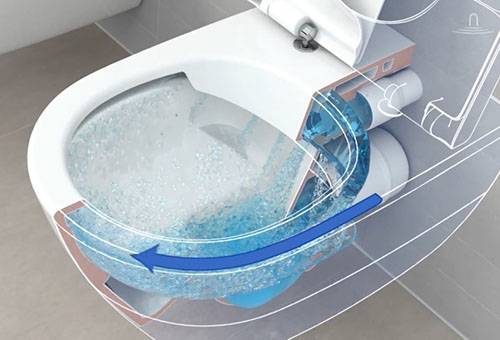
How does the drain work?
The flush toilet that replaced the potty was in itself a technological marvel of the time. Then the minimum requirements were imposed on him - to wash away waste products. Now the situation is different: the buyer wants to choose a model that not only washes off, but washes off well, in one go. Modern industry provides this opportunity, although the design of the drain mechanism has not changed much over the past 130 years.
Water flows through a special hose into the drain tank, which is equipped with a shut-off valve system.The filling system allows you to fill the tank to a certain level, after which the valve shuts off the water supply. When you press the button, the flush fittings begin to work: the valve opens and water rushes under pressure into the toilet bowl. Since the water level has decreased, the filling system is activated again. Thus, alternate actuation of two shut-off valve systems ensures comfortable use of the toilet.
Features of the design and mechanism of the drain tank
The filling/draining mechanism is located inside the tank; only the control system is located at the top. The classic design looks like this.
- The water filling hose is attached to the side wall, within 10 cm from the top edge.
- The valve, on the second side of which there is a float, regulates the filling of water. It rises with the water until the valve closes the fill hole.
- The siphon closes the drain located at the bottom of the tank.
- The control button is connected to the siphon; when pressed, the siphon moves and the flow of water rushes into the toilet bowl.
- An overflow protection system is also attached to the siphon.
In modern models, the water filling hose can be connected from below, near the drain hole. In this case, the shut-off valve is connected to the float by a vertical rod. With this design, the noise level is lower during water collection.
Advice
The level of collected water can be adjusted. For this purpose, an adjusting screw is provided on the float.
In old toilets, the fill and flush shut-off valves worked independently of each other. Modern models of the middle and high price segments are equipped with a mechanism with a combined configuration. All elements in it are interdependent.
Trigger
The flush tank release mechanism comes in two types - with automatic and mechanical mode. The difference between them is management.
- In automatic mode, just press the button once and the specified amount of water is flushed into the toilet.
- Mechanical mode provides water flow only as long as the user presses the button. As soon as the button is released, the drain is blocked.
The tank fittings can be controlled by a button located on the top or side, as well as by a chain. The chain is always located on the side of the tank.
How does the location of the tank affect drainage?
Tanks also differ in how they are installed. You can choose from the following options:
- compact - the tank is fixed to the toilet;
- built into the wall;
- wall mounted - attached to the wall slightly above the toilet;
- the tank is located high above the toilet (almost under the ceiling), connecting to it with a pipe.
The last type - when the tank is attached to the wall much higher than the toilet - provides the highest water pressure when flushing, since the greatest gravitational force acts here. This arrangement was traditional three decades ago. Nowadays it is chosen if the room is decorated in a retro style. In addition to the design, this placement has one more feature: when the water descends under pressure, it “notifies” the entire apartment about it.
How much water is in the tank?
The tank can hold from 6 to 9 liters of water, depending on the model. There are tanks with a water saving system. They have two flush modes: 6 liters and half - 3 liters. In such tanks there are two control buttons on top. Regardless of the type of tank, the amount of water drawn can be adjusted using the screw on the float.
Choosing a toilet according to the bowl shape
You can choose a bowl-shaped toilet from several options:
- with shelf;
- funnel-shaped;
- with a slope (visor).
A toilet with a shelf is, like a cistern located under the ceiling, a retro option. It is the most unhygienic of all types of bowls: it is problematic to wash off waste the first time with this shape. In addition, this toilet design is characterized by the presence of splashes and splashes when flushing water.
To ensure that everything is washed off well without splashing, it is better to choose a funnel-shaped bowl or a bowl with a slope. Both options will provide good washability. At the same time, you need to pay attention to one more nuance - the “anti-splash” function, which ensures that there are no splashes from waste products entering the bowl. It is implemented in many models. This effect is achieved by the location and shape of the drain neck.
In “anti-splash” models, the neck is located lower, and the drain hole in it is narrower. In addition, the water level in the neck should also be lower. It is indicated in the technical documentation. If it is stated that the toilet has an anti-splash function, then the height of the water in the neck should not be more than 7 cm.
Toilet flush system
The flushing efficiency largely depends on how the water supply holes are located in the toilet bowl. Now there are two varieties - straight and circular (reverse). With a direct flush, water flows down the back wall of the bowl into the neck. If something is not in the path of the flow, then it will have to be removed with a brush.
With a circular system, water enters the toilet not from one, but from three holes located in different places under the rim of the bowl. The flow of water evenly washes the inner surface of the toilet, forming a funnel in the neck.This design is considered the most hygienic and practical.
What is the toilet made of?
The most common materials for toilet bowls are ceramics (faience) and porcelain. Ceramics is a porous material. To prevent the surface from absorbing water, ceramic toilets are coated with glaze. Porcelain is more resistant to not only water, but also chemicals. Unfortunately, these qualities are offset by the high cost of porcelain toilets, which is why ceramic models are presented in the low and medium price segment.
As long as the glaze - the top layer of ceramics - is not damaged, it does not have any effect on the washout. If you use metal brushes and aggressive chemicals for cleaning, the glaze can easily be damaged. In this case, the surface will become rough and waste will be retained and not completely washed off.
Now on the market you can find plastic toilets covered with a layer of fiberglass, as well as models made of stainless steel. They have not become widely used, so it is still difficult to say about their practical properties.
What to choose?
To choose plumbing fixtures for the toilet with suitable characteristics, you need, first of all, to decide what is most important for the owners of the apartment. For example, if the main parameter is good flushing, and noise is not a hindrance, then a retro-style cistern will be the best option. If, on the contrary, noiselessness is one of the important characteristics, you should give preference to a tank into which water is drawn from below. In order for it to flush well, you need to choose a bowl with a circular flush.
Is saving water your top priority? Then you should buy a toilet with a “dual-mode” flush cistern.This article discusses various options for toilet and cistern designs. We hope that all of the above will help you choose the model that best suits all the characteristics.

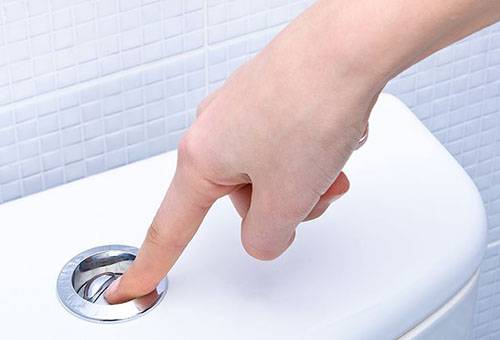
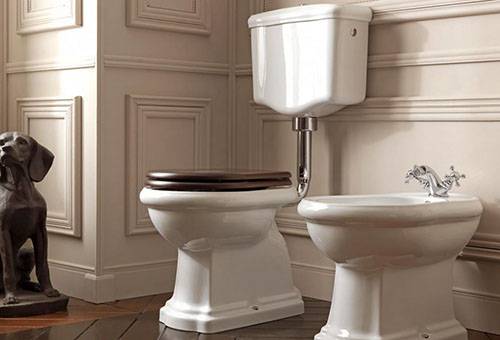
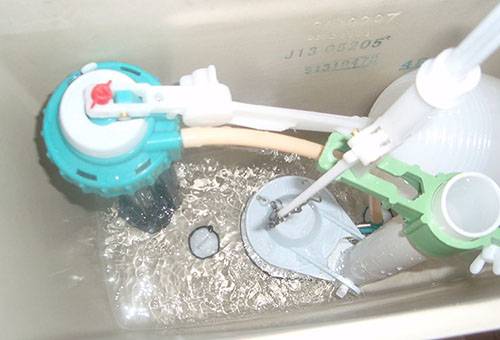
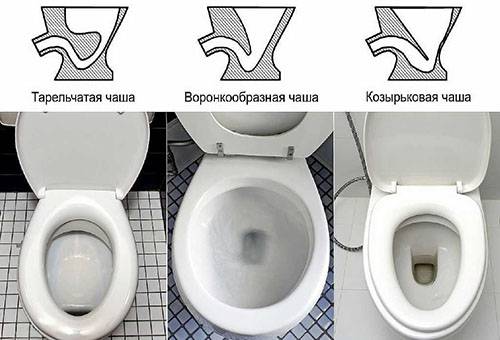
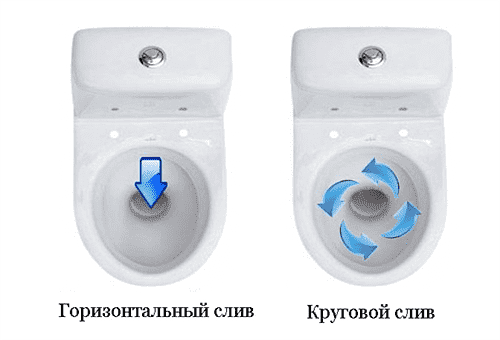
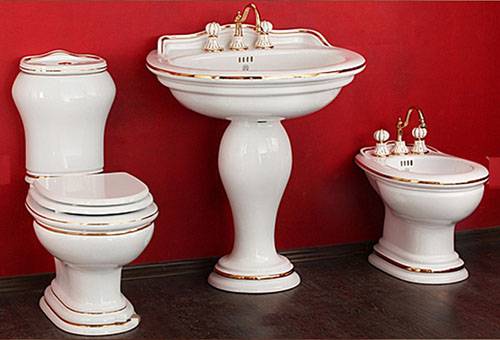
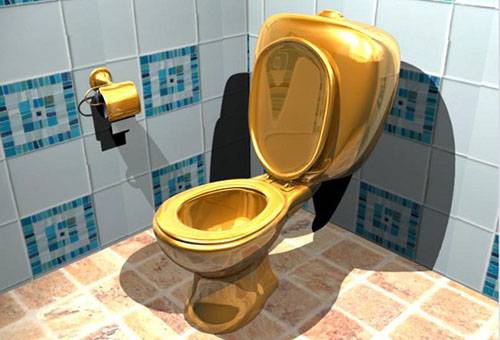
We are doing renovations in the apartment. I started choosing a toilet, but it turns out it’s not that simple. So many different nuances. The article describes well the different types of toilets.